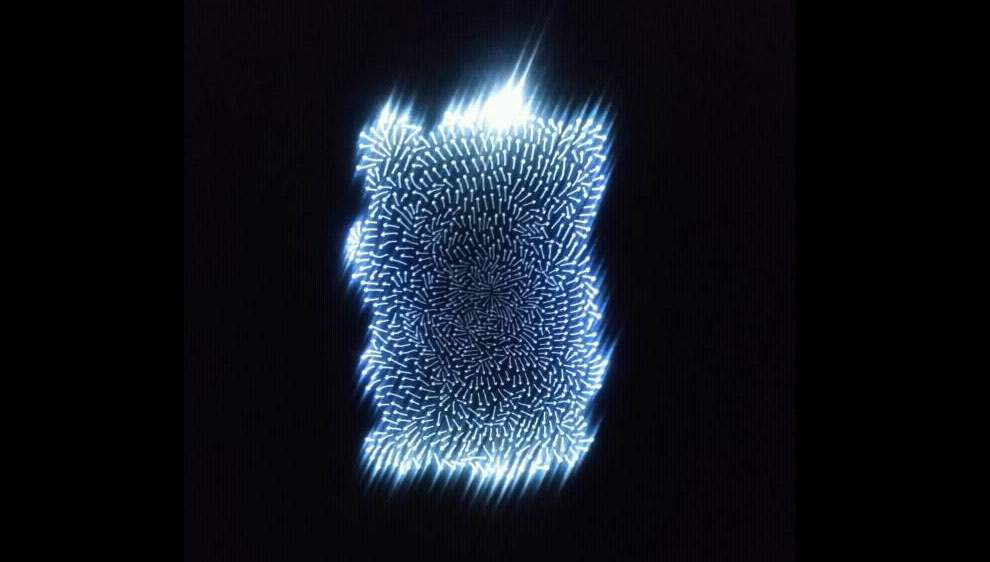La Spezia, Andrea Bianconi's three canticles on display at CAMeC
On view at CAMeC (La Spezia) from June 22 to Sept. 30 is the exhibition Fantastic Planet. Inferno, Purgatory and Paradise, a solo exhibition by Andrea Bianconi (Arzignano, 1974). With this exhibition, the artist intends to represent an inner allegorical journey that each visitor is called upon to make along the way. If with the exhibition αlfaβeta (at the Nuova Galleria Morone in Milan until July 6) Andrea Bianconi obsessively posed questions within a confined space, with Fantastic Planet. Inferno, Purgatory and Paradise, curated by Vittoria Coen, the artist instead presents the mimesis of an inner journey. While the Milan exhibition gave possible answers to these questions, imagining the fantastic planet inside of us (in the case of the cage with the mirror), outside of us (in the case of the arrows that came out from all points of a plane) or identifiable as a result of the almost obsessive repetition of certain words (“Fantastic Planet”), the Spezia exhibition represents the development, the evolution of this investigative work carried out by Bianconi.
Everything in the Spice exhibition revolves around the idea of travel, including physical travel, that people make through the various spaces within the museum. The source of inspiration is the journey described by Dante Alighieri through the three otherworldly worlds of Hell, Purgatory and Paradise. Like the journey made by the poet, Bianconi’s journey also has an end: if for Dante it is purification, for Bianconi it is the discovery of the origin of imagination, an element that nourishes and generates the very desire to set out. At the end of the path, the viewer finds himself before a large wall with a hypothetical landscape made up of arrows drawn on it, to indicate that Hell, Purgatory and Paradise are just about everywhere and immediately reachable by taking any direction, visitable even in the course of a single day. Here then unfolds the black hell filled with cages with mirrors (a symbol of introspection and reflection very dear to the artist), purgatory representing a pending paradise (and thus the place of doubt and transition), and finally heaven as a place of creation and harmony. The final destination of the journey is reached in a room opposite these three, but very close to that of Paradise, which is completely black and darkened. Here the motif of the arrow becomes a symbol of salvation in a light installation: the arrow is the indication that takes the viewer back to a new journey that everyone hopes to end with the vision of the stars, just as Dante did on leaving Hell: “E quindi uscimmo a riveder le stelle.”
Andrea Bianconi, an internationally renowned artist who lives and works between the United States and Italy, recently exhibited at the MSK Museum of Fine Arts in Ghent, Belgium, and participated in the Fifth Moscow Biennale with a performance between Red Square, the Kremlin and the Manege and with a wallinstallation at the Manege. He made a work at the Italian Embassy in Washington D.C. for the 150th anniversary of the Unification of Italy and has exhibited at the Boghossian Foundation in Brussels, Museu do Meio Ambiente in Rio de Janeiro, Centro del Carmen in Valencia, at the Film Society Lincoln Center in New York, at the Swiss Architecture Museum (S AM) in Basel, in Milan at Palazzo Reale, and in many other museums and galleries around the world. In 2011 Charta published his first monograph, and in 2012 Cura. Books published his first artist’s book, “ROMANCE,” and in 2013 his second entitled “FABLE.” Both are part of the collection of MoMA, NYC. In 2016 Silvana Editoriale published a monograph on the artist’s 10 years of performance, “Andrea Bianconi Performance 2006-2016.” In 2017 AmC collezione Coppola published “SOLO,” a monograph with an interview by Catherine De Zegher. In the same year he is featured at Galleria Bianconi in Milan in the exhibition “Partiture Visive” curated by Vittoria Coen and in the exhibition at Palazzo Bernaroli in Bologna entitled P-Art-Y. In 2018 he exhibited at the Archiginnasio in Bologna.
The exhibition can be visited Tuesday through Sunday, 11 a.m. to 6 p.m. Tickets: full 5 euros, reduced 4 euros (children and young people between 6 and 18 years old; Friends of Museums; Groups from 7 to 25 people; Cral; over 65 years old; university lecturers and teachers of 2nd grade schools - historical-artistic and archaeological disciplines - provided with suitable ID and not resident in the Municipality of La Spezia; Associations and affiliated subjects), special reduced 3.50 euros (school groups from outside the provinces of La Spezia, Genoa and Massa-Carrara), reduced for educational workshops 2 euros (reimbursement of expenses for workshop materials). Possibility to also purchase the Museums of La Spezia cumulative ticket for 12 euros, which is valid 72 hours from the date of issue and allows visits not only to the CAMeC but also to the Lia Museum, the Seal Museum, the San Giorgio Castle and the Ethnographic-Diocesan Museum. Special rate for tourists and cruise passengers visiting more than one museum on the same day: first museum visited full ticket, others at reduced rate. For information see the CaMEC website.
 |
| La Spezia, Andrea Bianconi's three canticles on display at CAMeC |
Warning: the translation into English of the original Italian article was created using automatic tools. We undertake to review all articles, but we do not guarantee the total absence of inaccuracies in the translation due to the program. You can find the original by clicking on the ITA button. If you find any mistake,please contact us.





























